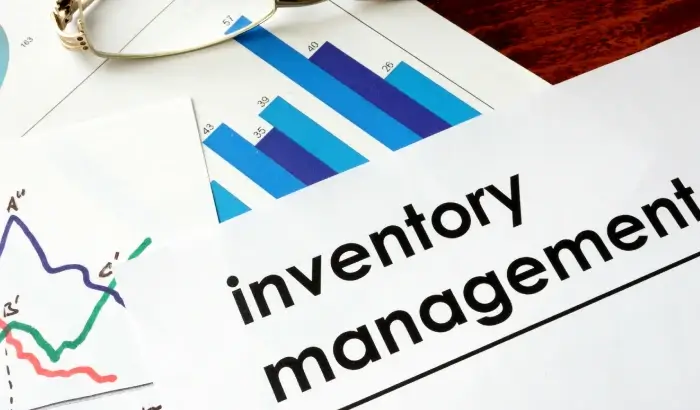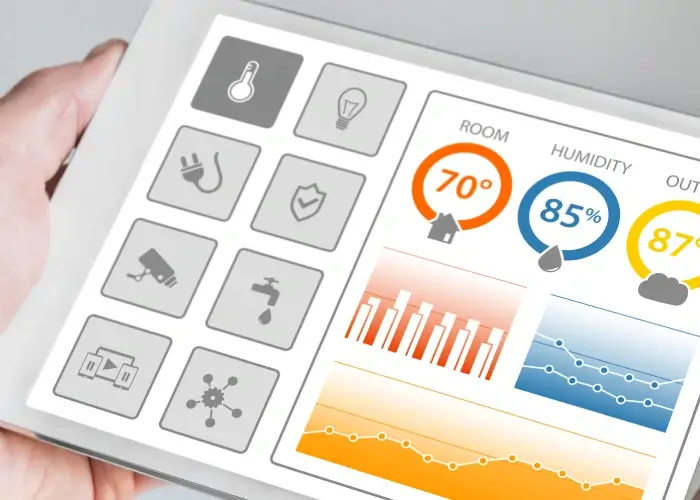
Live Inventory Tracking: Monitor stock levels across all retail link platforms to prevent overstocking or understocking. With automated updates and alerts, businesses can streamline inventory replenishment and avoid lost sales due to stockouts.
Sales Performance Metrics: View up-to-the-minute sales data segmented by product, location, or sales channel. Retailers can quickly identify top-performing products and underperforming categories, enabling data-driven adjustments to promotions or stock allocations.
Customer Insights: Analyze shopper behavior and preferences as they interact with various touchpoints in your omnichannel ecosystem. This includes tracking conversion rates, browsing patterns, and purchase histories to craft personalized experiences.
Operational Efficiency Indicators: Evaluate metrics like checkout times, staff productivity, and delivery turnaround to identify bottlenecks and optimize workflows.
Promotional Impact Analysis: Assess the real-time performance of marketing campaigns and discounts. Retailers can determine ROI instantly and tweak strategies to maximize engagement and sales.



Channel-Specific KPIs: AI-driven analytics provide granular insights into conversion rates, average order value, and return rates for each channel. These metrics help businesses optimize channel-specific strategies and allocate resources effectively.
Cross-Channel Customer Journey Tracking: Advanced tracking tools powered by AI map customer interactions across online and offline platforms. Retailers gain visibility into how customers move through the omnichannel ecosystem, enabling the creation of smoother, more personalized experiences.
Unified Marketing Analytics: AI-integrated dashboards evaluate the impact of marketing campaigns on driving traffic to individual channels. Retailers can measure ROI in real time and adjust campaigns to maximize reach and engagement.



Demand Forecasting: Predict product demand to optimize inventory management.
Customer Retention Analysis: Identify at-risk customers and implement targeted retention strategies.
Pricing Optimization: Suggest optimal pricing based on competitor data, market trends, and historical sales.
Advanced predictive dashboards use machine learning algorithms to analyze retail decisions. By integrating with existing retail link platforms, these tools offer seamless usability and accuracy.
Retailers using predictive analytics have reduced waste by up to 20% and achieved 15% higher customer retention rates.

Supplier Performance Metrics: Evaluate supplier reliability based on delivery times and order accuracy.
Inventory Turnover Rates: Measure how quickly products are sold and replaced.
Cost Analysis: Track procurement costs and identify areas for savings.
Custom IT services can connect inventory dashboards with warehouse management systems, automating reordering processes and ensuring data consistency across platforms.


Segmentation Analytics: Break down customer data by demographics, purchasing habits, and engagement levels.
Personalized Recommendations: AI-driven suggestions for upselling and cross-selling based on individual preferences.
Feedback Analysis: Monitor reviews and feedback to identify areas for improvement.
These features require seamless integration with CRM and e-commerce platforms. Tailored dashboards ensure the alignment of customer data across all touchpoints in the omnichannel journey.

| Cookie | Duration | Description |
|---|---|---|
| __cf_bm | 1 hour | This cookie, set by Cloudflare, is used to support Cloudflare Bot Management. |
| _cfuvid | session | Calendly sets this cookie to track users across sessions to optimize user experience by maintaining session consistency and providing personalized services |
| cookielawinfo-checkbox-advertisement | 1 year | Set by the GDPR Cookie Consent plugin, this cookie records the user consent for the cookies in the "Advertisement" category. |
| cookielawinfo-checkbox-analytics | 11 months | This cookie is set by GDPR Cookie Consent plugin. The cookie is used to store the user consent for the cookies in the category "Analytics". |
| cookielawinfo-checkbox-functional | 11 months | The cookie is set by GDPR cookie consent to record the user consent for the cookies in the category "Functional". |
| cookielawinfo-checkbox-necessary | 11 months | This cookie is set by GDPR Cookie Consent plugin. The cookies is used to store the user consent for the cookies in the category "Necessary". |
| cookielawinfo-checkbox-others | 11 months | This cookie is set by GDPR Cookie Consent plugin. The cookie is used to store the user consent for the cookies in the category "Other. |
| cookielawinfo-checkbox-performance | 11 months | This cookie is set by GDPR Cookie Consent plugin. The cookie is used to store the user consent for the cookies in the category "Performance". |
| CookieLawInfoConsent | 1 year | CookieYes sets this cookie to record the default button state of the corresponding category and the status of CCPA. It works only in coordination with the primary cookie. |
| viewed_cookie_policy | 11 months | The cookie is set by the GDPR Cookie Consent plugin and is used to store whether or not user has consented to the use of cookies. It does not store any personal data. |
| wpEmojiSettingsSupports | session | WordPress sets this cookie when a user interacts with emojis on a WordPress site. It helps determine if the user's browser can display emojis properly. |
| Cookie | Duration | Description |
|---|---|---|
| li_gc | 6 months | Linkedin set this cookie for storing visitor's consent regarding using cookies for non-essential purposes. |
| lidc | 1 day | LinkedIn sets the lidc cookie to facilitate data center selection. |
| wp-wpml_current_language | session | WordPress multilingual plugin sets this cookie to store the current language/language settings. |
| yt-remote-cast-installed | session | The yt-remote-cast-installed cookie is used to store the user's video player preferences using embedded YouTube video. |
| yt-remote-connected-devices | never | YouTube sets this cookie to store the user's video preferences using embedded YouTube videos. |
| yt-remote-device-id | never | YouTube sets this cookie to store the user's video preferences using embedded YouTube videos. |
| yt-remote-fast-check-period | session | The yt-remote-fast-check-period cookie is used by YouTube to store the user's video player preferences for embedded YouTube videos. |
| yt-remote-session-app | session | The yt-remote-session-app cookie is used by YouTube to store user preferences and information about the interface of the embedded YouTube video player. |
| yt-remote-session-name | session | The yt-remote-session-name cookie is used by YouTube to store the user's video player preferences using embedded YouTube video. |
| ytidb::LAST_RESULT_ENTRY_KEY | never | The cookie ytidb::LAST_RESULT_ENTRY_KEY is used by YouTube to store the last search result entry that was clicked by the user. This information is used to improve the user experience by providing more relevant search results in the future. |
| Cookie | Duration | Description |
|---|---|---|
| _ga | 1 year 1 month 4 days | Google Analytics sets this cookie to calculate visitor, session and campaign data and track site usage for the site's analytics report. The cookie stores information anonymously and assigns a randomly generated number to recognise unique visitors. |
| _ga_* | 1 year 1 month 4 days | Google Analytics sets this cookie to store and count page views. |
| _gcl_au | 3 months | Google Tag Manager sets the cookie to experiment advertisement efficiency of websites using their services. |
| _li_id | 2 year | Leadinfo places two cookies that only provides Eastern Enterprise insights into the behaviour on the website. These cookies will not be shared with other parties. |
| Cookie | Duration | Description |
|---|---|---|
| bcookie | 1 year | LinkedIn sets this cookie from LinkedIn share buttons and ad tags to recognize browser IDs. |
| guest_id | 1 year 1 month | Twitter sets this cookie to identify and track the website visitor. It registers if a user is signed in to the Twitter platform and collects information about ad preferences. |
| test_cookie | 15 minutes | doubleclick.net sets this cookie to determine if the user's browser supports cookies. |
| VISITOR_INFO1_LIVE | 6 months | YouTube sets this cookie to measure bandwidth, determining whether the user gets the new or old player interface. |
| VISITOR_PRIVACY_METADATA | 6 months | YouTube sets this cookie to store the user's cookie consent state for the current domain. |
| YSC | session | Youtube sets this cookie to track the views of embedded videos on Youtube pages. |
| yt.innertube::nextId | never | YouTube sets this cookie to register a unique ID to store data on what videos from YouTube the user has seen. |
| yt.innertube::requests | never | YouTube sets this cookie to register a unique ID to store data on what videos from YouTube the user has seen. |
| Cookie | Duration | Description |
|---|---|---|
| __Secure-ROLLOUT_TOKEN | 6 months | Description is currently not available. |

